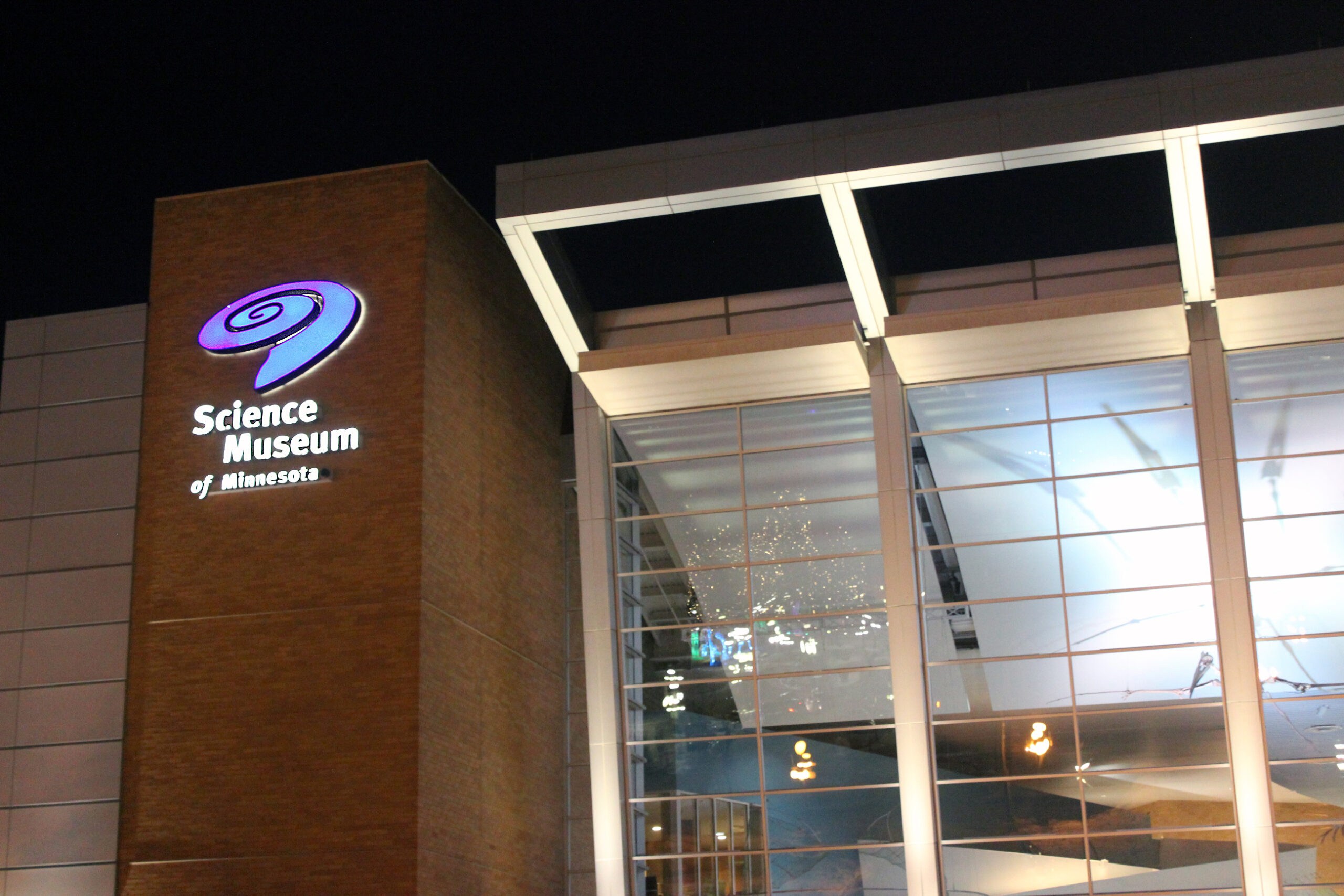

Share
The educators, researchers, and lab technicians at the prestigious Science Museum of Minnesota have been fighting not only to form a union, but to keep union members’ jobs, in the face of what they say is retaliation from management. Their efforts—and frustrations—show how when workers vote to form a union, the struggle is not over, but is just beginning.
Six workers at the Science Museum of Minnesota went back to work on August 10 after the museum laid them off in March. Since then, they’ve been under a “waiting to be engaged” status, basically sitting around and waiting for the downtown St. Paul museum to give them work to do.
“Am I in the Twilight Zone?” said Natalie Naranjo, a former professional development specialist in the Inclusion, Diversity, Equity, Access, Leadership Professional Development (IDEAL) Center at the museum. Naranjo, although recently reinstated, accepted a job offer with another education organization in the Twin Cities. “It is absurd, when your mission is to do equity in STEM fields, that you’re letting people who do that work just fart around all day and wait for a phone call.”
On January 6, museum workers voted 79-50 in favor of unionizing with AFSCME Council 5 to become the Science Museum of Minnesota Workers Union. Around 250 workers are included in the union: scientists, researchers, lab technicians and managers, specialists, facilitators, educators, customer service, and more. Some are full-time, some are part-time, and some are seasonal. Some are located at the St. Croix Watershed Research Station, and some work on traveling exhibits.
Then the layoffs started. In the midst of a slow recovery from the Covid-19 pandemic, leadership decided upon restructuring through staffing cuts. In March, the museum cut 30 positions total, 15 of which were vacant, and 15 of which were filled. According to statements from the union and the museum, 12 staff members lost their jobs, most of which were union eligible. The museum says one employee was considered to be conditional by the National Labor Relations Board (NLRB), which means that a decision would be made after the union election whether or not the position was a supervisor or manager, therefore ineligible for union representation. The union says that two employees were considered conditional. Three of the laid off workers were offered their positions back soon after, and two of them accepted. Six were later reinstated in August after the union took action, bringing an unfair labor practice (ULP) charge against the museum to the NLRB on March 20, alleging that the layoffs were unfairly bargained and that the museum was withholding information. Workers say that the layoffs were retaliatory, since five of the six who weren’t offered their jobs back soon after were leaders on the union organizing committee.
In a statement to Workday Magazine, the museum says that they did not consider union activity when deciding upon which roles to lay off. “Our goal was, and remains, to partner effectively with AFSCME, and we respect the direction of the NLRB. Our voluntary recall of all of the union-eligible employees in light of the ULP claim is a demonstration of this commitment and respect,” said a spokesperson for the museum.
But, more than a month after reinstatement, employees say they still aren’t technically working, and that the job duties are being performed by outside contractors, which the museum denied in an email.
“This was not in any meaningful sense a voluntary recall. The NLRB made them do it and threatened them with a hearing,” said Jennings Mergenthal, a community engagement specialist at the museum and chair of the union’s bargaining committee, in an email to Workday Magazine. “The museum has really convinced itself that because they are calling this a ‘restructure’ that it isn’t illegal, but it is, because they didn’t stop doing the work that the laid off staff were doing.”
Last month, the NLRB revised standards to employers’ duty to bargain, which protects workers from changes to working conditions made unilaterally by employers. Since the reinstated workers aren’t performing the work they were doing before the layoffs, that can be considered a change in the terms and conditions of their employment that wasn’t fairly bargained, so the union filed another ULP charge on September 14. Last week, after the charge was filed, Andrew Skluzacek left his labor relations position at the museum, according to an email obtained by Workday Magazine.
JM Kallio is an exhibit developer who began working at the museum in 2018 and was laid off and reinstated this year. “It feels like I’m in a weird no man’s land right now,” they said. “I definitely think there could have been a case for keeping me if it hadn’t been for the timing of how vocally pro-union I was leading up to layoffs.”
Gretchen Haupt, an evaluation and research associate on the union organizing committee, said the museum still hasn’t provided enough financial detail to prove hardship behind the reasoning for layoffs, which was also part of the ULP. “Their argument has pivoted from dire financial needs to our business model has changed and this work doesn’t exist so we’re no longer doing work in this way,” she said.
“We all know that there is work to do in our departments, it’s just a stalling tactic until they can lay us off again,” said Naranjo.
In an email, the museum says that it is not looking to fire the workers again, but is looking for a “resolution to acknowledge that their roles will not return to the museum’s current structure.”
Negotiations for the union’s first contract began in August, but according to workers, the museum is still withholding information, making it hard for the workers to come up with economic proposals. The museum says that much of the information asked for by the union is publicly available.
“It’s still kind of a hot mess,” said Haupt. “You can sit and you can talk at us … but we can’t bargain this because we don’t have the information that we need to do this in good faith.”
Naranjo said she believes that the museum’s behavior doesn’t line up with the museum’s stated commitments on using the tools of STEM to advance justice and equity. “The mission, vision, and values only happens when the people who are on the ground delivering those things are treated well, aren’t burning out, and have thriving wages,” she said.
Recovery, retaliation, reinstatement
Like many organizations, the Science Museum receives funding from the state government. In March, the museum sought an increase in funds to recover from the pandemic. This year, the museum received $7 million as part of an appropriations bill that includes specific language devoted to “debt reduction, rehiring and retaining employees, supporting employee contracts, and diversity and inclusion training and outreach.” According to the museum, $4.8 million is going toward debt reduction and $2.2 million is going toward rehiring and retaining employees, supporting employee contracts, and diversity and inclusion training and outreach.
According to Naranjo, Minnesota state representative María Isa Pérez-Vega reached out to workers shortly after the layoffs in March and was able to work in the language supporting the rehiring of workers into the bill. “She made it very clear that supporting employee contracts meant supporting union- organizing work,” said Naranjo.
Workers rallied outside of the museum on August 10 to pressure their employer to use the millions provided by the state for rehiring and retaining employees. The six workers were already being reinstated later that day, however, they weren’t given access to their emails right away, or access to the museum building. A petition urging the museum to fully reinstate and retain the workers has collected around 200 signatures.
Sophie Wang, a professional development specialist in the IDEAL Center, who was laid off and reinstated this year, moved from California to Minnesota in 2021 for her “dream job” at the museum. “The fact that they are trying to prevent us from doing any of the work that we are getting paid to do makes it clear that their priority is not engaging us in the museum, which makes you wonder, what would be their incentive for not letting us engage in the museum?” said Wang. “At the end of the day this is about people’s lives. It’s about care and connection and people being able to have enough to experience joy and wonder in our natural and our cultural worlds. You would hope that a place that has a mission like the Science Museum would have a commitment to the employees that allow people to experience those things.”
Nicole Dzenowski also moved to Minnesota for a position managing the paleontology lab at the museum a week and a half before the pandemic emergency shut down nonessential workplaces. “Not having people there wears you down,” she said. “It was like trying to find your way in the dark.”
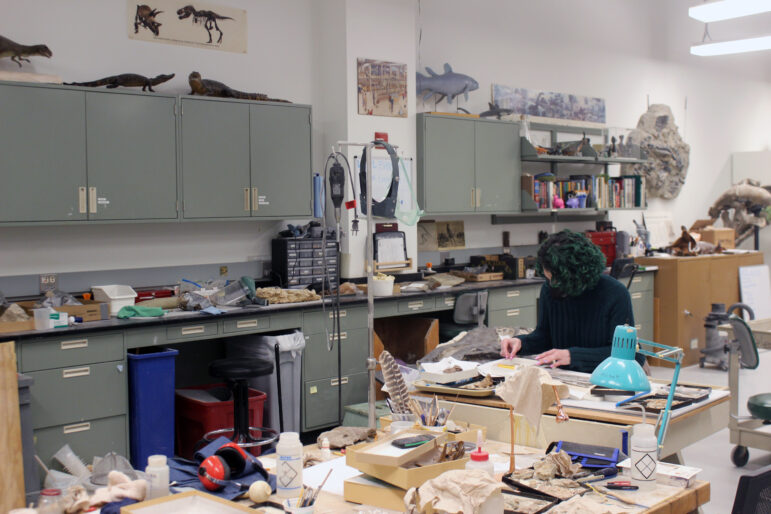
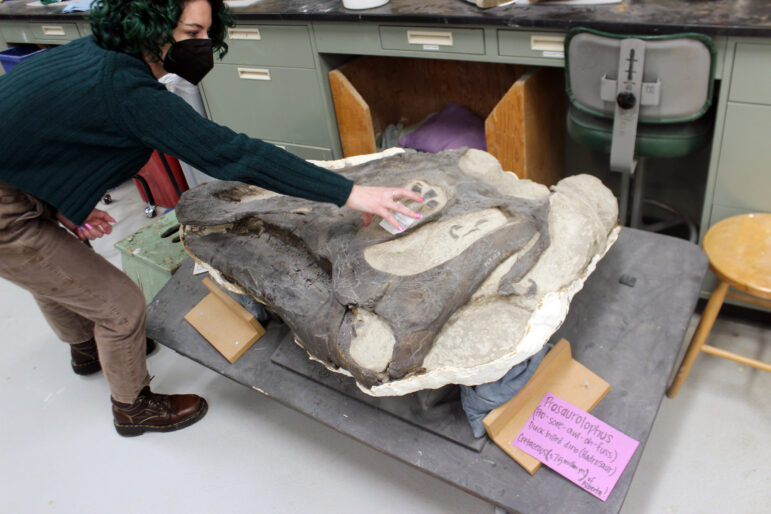
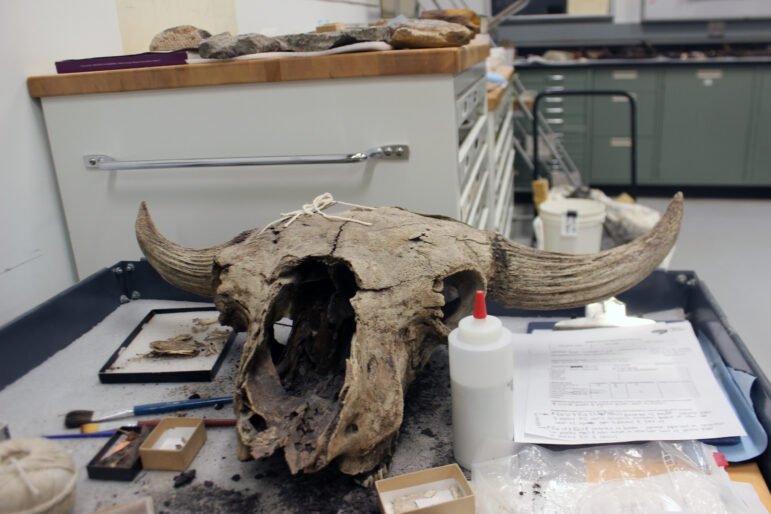
Although U.S. support of unions is at a historic high, union density is at a historic low. Cultural workers at institutions like museums have been part of a wave of union organizing in response to pandemic layoffs and worsening working conditions, while facing anti-union tactics and hypocritical behavior that seems to juxtapose progressive content delivered to the public through exhibits and programming.
“It doesn’t have to be this way,” said Wang. “This may be on the scale of some of the most aggressive union busting we’ve seen at a cultural institution across the U.S. It’s in the neighborhood of what we see at large corporations, like Amazon or Starbucks.”
Haupt said that the trauma from the pandemic raised an existential challenge for her coworkers and the museum field in general, and questions that labor organizing in the cultural sector could potentially answer. “How do we become more relevant to the audiences that we are trying to reach?” said Haupt. “Being in greater solidarity, up and down the hierarchy. It is all part of one big ecosystem.”
Collective liberation in the workplace
The idea for a union at the museum first came out of a collective action around the museum’s relationship with the St. Paul Police Department. According to workers, after the George Floyd uprising in the summer of 2020, museum leadership made the decision to continue employing an off-duty police officer even though police presence may not be welcoming to employees or visitors. According to the museum, the museum’s Public Safety team, which is devoted to providing building security, emergency medical treatment, and customer service has included off-duty police officers in past years.
After a group, which included some managers and directors, pushed for a review, leadership made the decision to no longer employ the off-duty police officer. A seed was planted, and workers began to realize they could have more power in the workplace. Kallio said they were the first person to bring up “the ‘U’ word,” and began to rabble rouse. In the fall of 2020, they reached out to AFSCME because of its success in organizing cultural workers.
Oanh Vu is a youth manager at the Kitty Andersen Youth Science Center who works with students who are paid to work on projects addressing social justice issues using media technology. Vu said the unionization efforts inspired her to stay invested in the museum after the pandemic began to erode her sense of hope. Because she was able to form relationships at the museum over the 14 years she worked there, it was easier to have one-on-one conversations with co-workers about a union.
“People want to be a part of the conversation in order to make decisions,” she said. “That museum leadership would say, ‘No, we don’t want you to be part of those conversations,’ I think that comes from a place of fear.”
Two years later, workers publicly announced a union drive to seek union representation.
In an email, the museum said that they responded to questions from employees about unionizing with the following: “We believe remaining primarily union-free provides employees more direct control, ensures broader representation across employee groups, and can provide more flexibility and responsiveness from leadership.”
Dzenowski said that sharing decision-making power shouldn’t be scary. “One of the floor staff said once when we were meeting, ‘A hundred of our screams come out as a whisper,’ ,” she said. “Whenever folks say, ‘Wait a minute, I’m a person, and I inherently have value,’ it turns into a fight.”
The workers fought to allow mail-in ballots for the election, but the museum required the election to be in person for those not working on traveling exhibits. In early January, workers helped get each other to the museum in order to cast their ballots during the “Big Mess,” one of the heaviest winter blizzards in Minnesota history.
Within a year of announcing they were pursuing union representation, Science Museum workers won their election and won reinstatement. “There’s a lot to be won for workers,” said Kallio.
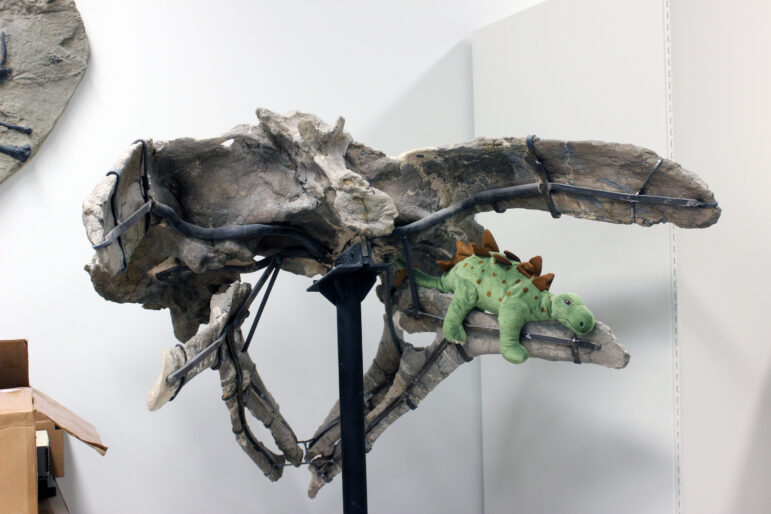
The museum’s mission includes the statement: “We reject oppressive norms and practice authentic inclusion to achieve collective liberation.” But for the workers, this language is performative. “People who are doing the day-to-day work don’t get input on impactful things like how pay increases happen,” said Vu. “I’ve been there 14 years, and I know others who have worked here longer, but our experience isn’t valued in terms of pay.”
Haupt started working part-time at the museum in 2012 at $14 an hour. That same position, ten years later, rose to $14.86 an hour. Instead of asking workers how they felt about their compensation, she said the museum hired external contractors to conduct an opaque salary review using market analysis. The workers say they discovered in a recent bargaining session that the analysis was completed by the museum because the contractors couldn’t finish due to the complex nature of the museum’s finances. According to the museum, the contractor’s recommendations were handed off to senior leadership, who completed the report. “There’s still this really pervasive assumption that we should be honored to have the opportunity to work in this field,” said Haupt.
“But we can’t eat prestige.”
The phrase “we can’t eat prestige” is in reference to a book by John Hoerr about the struggle to organize white-collar workers at Harvard.

